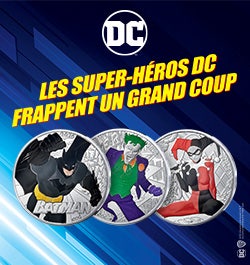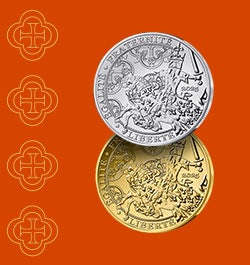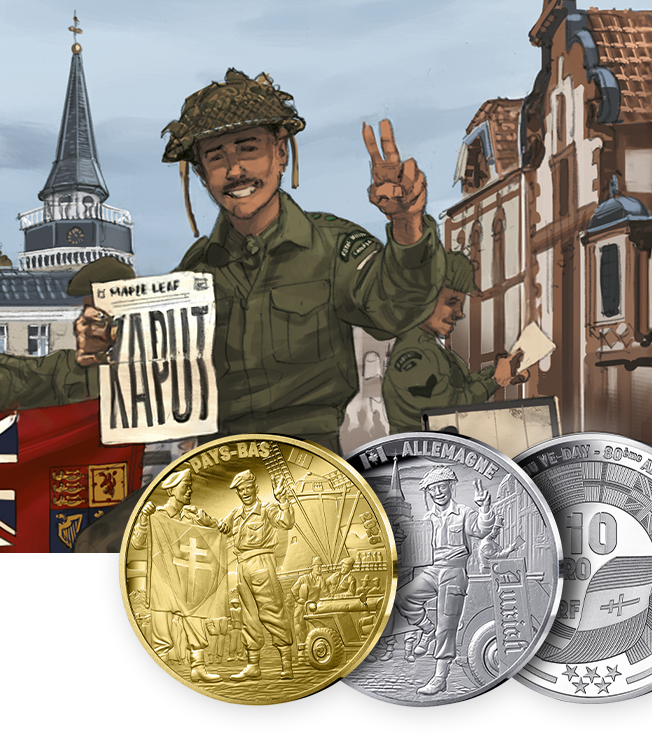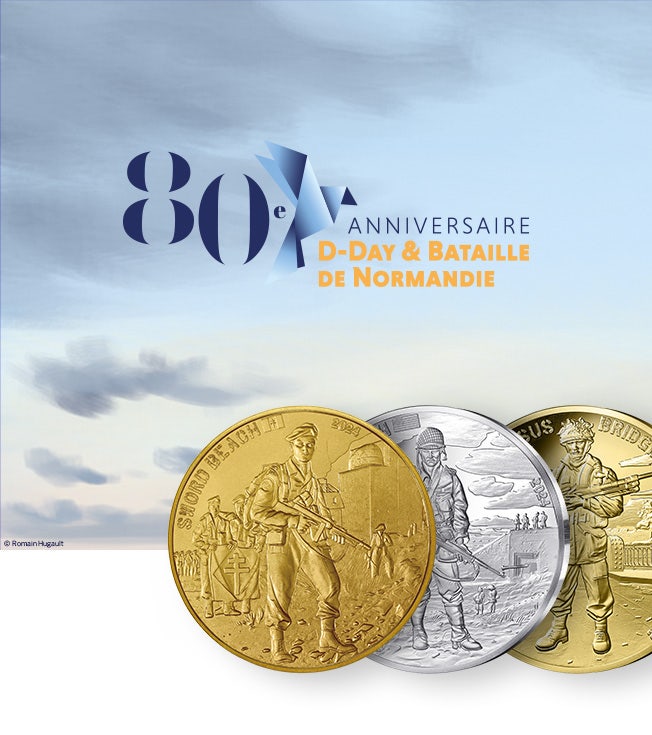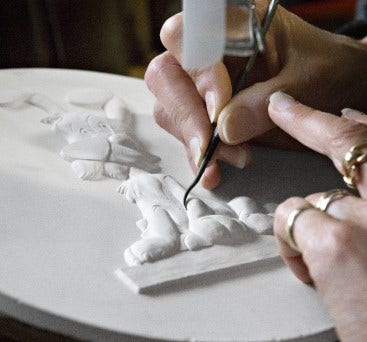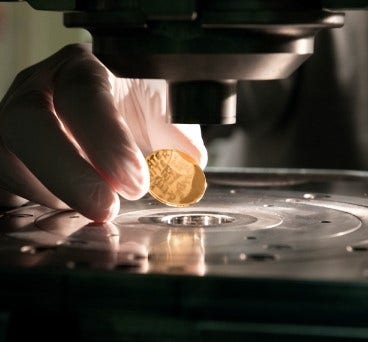Eleven months after landing on the beaches of Normandy, Allied forces scattered across Europe celebrate the surrender of Nazi Germany. A historic day, “V-E DAY” (or Victory in Europe Day) symbolizes the end of nearly six years of conflict and the return of peace for millions of Europeans. 80 years after this decisive victory, Monnaie de Paris celebrates this historic event by paying a new tribute to the great Allied nations who fought for the liberation of France and Europe.
Richard, private of the 6th Airborne, landed on the night of June 6th, 1944. After the Battle of Normandy, which culminated in the liberation of Calvados, the division was put to rest in Great Britain.
In December 1944, the unit was rushed to Belgium to take part in the Battle of the Bulge, then crossed the Rhine as part of Operation Varsity. At the end of April, it joined up with Soviet troops near Wismar, but its involvement did not end there, as part of the 6th Airborne was sent to the Far East to take part in the fighting against the Japanese. The war came to an end on September 2nd, 1945, and the unit witnessed the disarmament of the Japanese in Malaya and Singapore.
The reverse of this coin features all the Allied countries that officially took part in the Normandy landings, surrounded by the face value and the RF initials. Clockwise: France Libre, Netherlands, New Zealand, Poland, Australia, USA, Norway, UK, Czechoslovakia, Canada, Belgium.
The stars under the flags are also a tribute to the Liberty Road, mile markers marking the route taken by the 3rd US Army in liberating France as far as Luxembourg.

